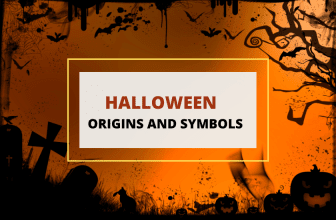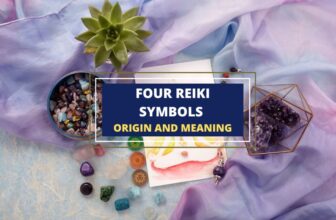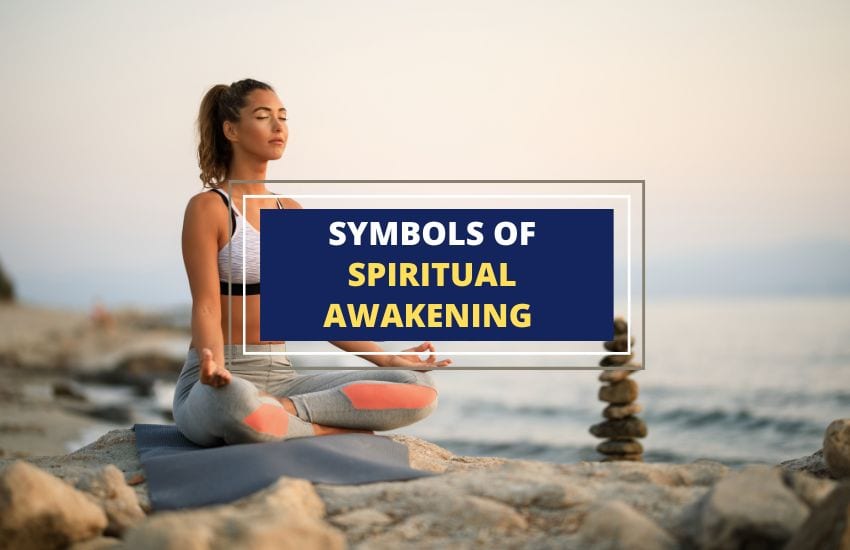
Table of Contents
At its heart, spiritual awakening is the realization and deep connection that a person can have with their inner self and the universe. You might feel a great sense of clarity, peace, and connectedness with the universe.
If you’re on a quest to experience spiritual awakening, these 21 symbols can guide you on your path.
What is Spiritual Awakening?
Spiritual awakening is a transformative experience that can profoundly impact your life. It is often described as a shift in consciousness or an expansion of awareness, where you align with your inner self and the world around you. During this experience, you may feel a deep connection to the divine or a higher power, which can provide comfort, guidance, support, and help you feel less alone.
Undergoing spiritual awakening can bring a greater understanding of your purpose in life because it will help you find meaning and direction. And while it provides you with a sense of fulfillment and satisfaction, it can also challenge your old way of thinking by shaking your current belief system and opening your mind to new possibilities.
Signs of Spiritual Awakening
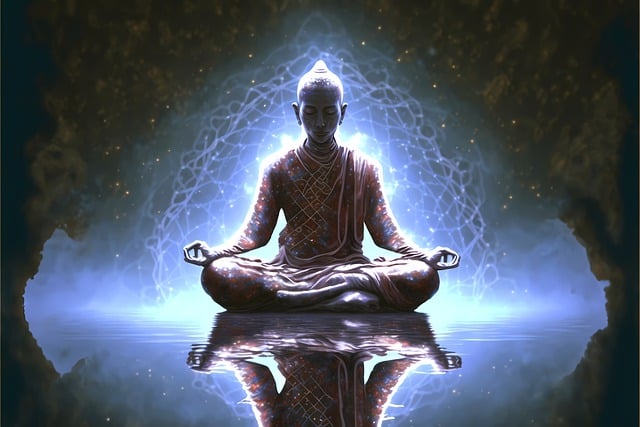
Throughout history, various terms have been used to describe spiritual awakening. In Buddhism, it is referred to as “enlightenment” and is described as a state of pure consciousness or a state of being where one is free from suffering.
Christians associate it with “salvation,” which emphasizes being saved from sin or eternal damnation and focuses on having the right relationship with God.
Hindus perceive it as more of a “liberation,” referring to a state of freedom from the cycle of birth, death, and rebirth, often described as being free from attachment and desire.
Generally, it can be considered as self-realization or having a deep understanding of your true nature and essence.
According to the famous Swiss psychiatrist Carl Jung, who was one of the first Western thinkers to popularize the idea of spiritual awakening in the modern era, the process of individuation, or becoming one’s true self, was a form of spiritual awakening that involved integrating the conscious and unconscious aspects of the psyche.
Spiritual Awakening in Today’s World
In recent years, the concept of spiritual awakening has gained more mainstream attention as more people seek to connect with their inner selves, higher purpose, and spiritual essence. You don’t have to be religious to experience a spiritual awakening.
However, spiritual awakenings are unique to each individual and can vary significantly in their intensity, duration, and nature. Some people may experience a subtle shift in their consciousness, while others may completely transform their personalities, values, and beliefs.
Spiritual awakenings can also take many forms, depending on your background, culture, and spiritual practices.
- They may involve a religious experience, such as a vision or a feeling of divine presence, or they may be purely spiritual in nature, such as a deep sense of oneness with the universe.
- In some cases, spiritual awakenings may result from deliberate spiritual practice, such as meditation, prayer, or yoga. These practices can help to quiet the mind, open the heart, and connect the individual with their inner wisdom and spiritual essence.
- At other times, spiritual awakenings may happen spontaneously without any apparent cause or trigger, happen suddenly and intensely, or unfold gradually over time. It is also possible to feel physical sensations, like warmth, or a feeling of lightness, or the experience may be purely internal and subjective.
Symbols of Spiritual Awakening
The following symbols represent the concept of a spiritual awakening. Each of these can have different interpretations, depending on your own spiritual journey and beliefs.
1. Lotus flower

The lotus is a powerful symbol of spiritual awakening and enlightenment in many spiritual traditions, including Buddhism, Hinduism, and Jainism. It is unique because it grows in muddy or murky waters but emerges pure and beautiful, representing the journey from darkness to light and the ability to rise above suffering and obstacles.
Because the roots of the lotus are buried in the darkness of the mud, it can be perceived as the unconscious mind and the things that hold you back. As the lotus grows towards the surface, it emerges into the light, thus representing the awakening of the higher self and the journey toward enlightenment. Like the lotus flower, you can overcome suffering and obstacles to find inner peace and enlightenment.
2. Butterfly

In many spiritual traditions, the butterfly is accepted as a metaphor of the soul or spirit. The caterpillar stage depicts the earthly and material aspects of the self, while the cocoon stage illustrates the period of spiritual transformation and growth. The butterfly’s emergence from the cocoon then stands for the awakening of the higher self and attaining spiritual enlightenment.
These stages of transformation are similar to the process of shedding old beliefs and habits as you embrace new perspectives and ways of being. They serve as reminders that change and growth are essential aspects of the human experience, that you can learn to embrace the unknown, and that you should trust in the process of transformation.
3. Bodhi Leaf

The Bodhi leaf holds significant symbolism in Buddhism, as it originates from the Bodhi tree under which Buddha attained spiritual enlightenment. This sacred tree epitomizes the culmination of Buddha’s journey from a life of material comforts to one of deep spiritual understanding.
As Buddha’s enlightenment was achieved through unwavering meditation and self-discipline, the Bodhi leaf encourages you to cultivate these qualities within yourself. It highlights the idea that spiritual wisdom cannot be achieved easily, and you must actively seek answers and engage in self-reflection and introspection.
4. Sun

The sun’s symbolism as a source of strength and enlightenment demonstrates the awakening of consciousness and the illumination of higher knowledge and understanding. For example, the rising and setting of the sun is similar to the idea of renewal and rebirth, with each new day offering the opportunity for growth and transformation.
In some religious traditions, the sun is seen as a manifestation of the divine presence that illuminates the path to spiritual growth and enlightenment. Meanwhile, in astrology, the position of the sun in one’s birth chart is said to represent their ego identity and core strengths, representing self-awareness and personal power.
5. Unalome

Commonly associated with Buddhism and Hinduism, the Unalome emblem is a popular choice for those on a spiritual journey or seeking a greater sense of purpose and meaning in their lives. It is perceived as a visualization of the journey toward spiritual enlightenment, which is often likened to the path to freedom.
The symbol consists of a spiral, a swirl, and a series of dots at the top, with each part standing for different stages of enlightenment. The spiral at the bottom illustrates the beginning of the journey, while the swirl in the middle stands for the challenges and obstacles that you encounter along the way. Finally, the dots at the top embodies the attainment of enlightenment or a higher level of spiritual awareness.
6. Feathers

Feathers hold significant meaning in various cultures and spiritual beliefs. Firstly, their association with birds and flight is a metaphor for freedom, as well as the ability to transcend limitations and reach new heights in one’s life.
Secondly, feathers epitomize the cycle of life, including death and rebirth. This connection to the natural order of things highlights the transformative nature of existence and the continuous evolution of the soul. As symbols of spiritual awakening, they can encourage you to embrace your inner self and develop a deeper understanding of life’s purpose and meaning so you can find greater fulfillment and personal growth.
7. Vel

Lord Murugan, the son of the Hindu gods Lord Shiva and Goddess Parvati, also known as the God of War, Wisdom, and Love is often depicted wielding the Vel. It is a divine weapon that exemplifies the power to conquer negative forces and overcome obstacles on the path to spiritual enlightenment, as well as the divine wisdom and knowledge bestowed upon him by his parents.
In temples dedicated to Lord Murugan, the Vel or divine javelin is prominently displayed as a reminder of the deity’s power to help devotees redeem their sins and attain spiritual awakening. The spear’s sharp tip signifies unwavering devotion, focus, and ambition to evolve and elevate one’s consciousness, encouraging you to develop a strong connection you’re your spiritual self and pursue a path of righteousness.
8. Torch

A powerful symbol recognized and revered in many cultures throughout history, the torch is a popular representation of inspiration, knowledge, and enlightenment. It is also associated with teaching and guidance, with the torch illuminating the path forward while offering clarity and direction to those seeking awareness and understanding.
As the mastery of fire has been a hallmark of human civilization, the torch as the holder of fire embodies the progress and advancement of culture. At the same time, it signifies hope and optimism as it demonstrates the power of light to overcome darkness and adversity.
9. Spiral
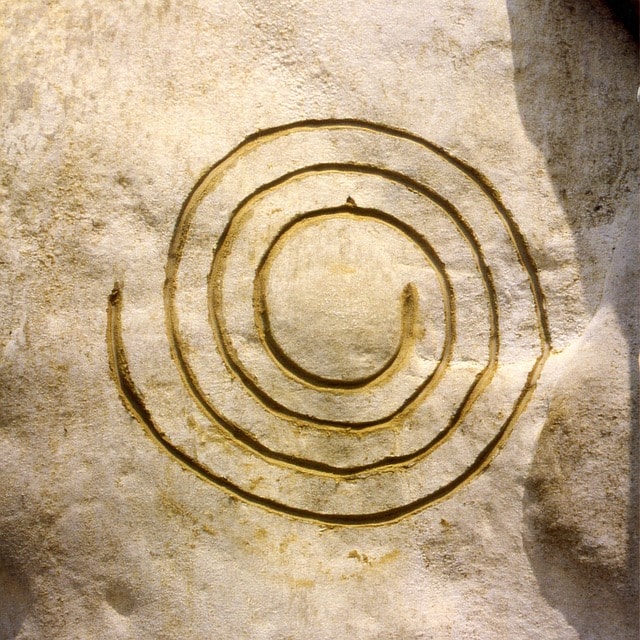
In nature, the spiral can be observed in human physiology, animals, plants, minerals, and even weather patterns. As a spiritual symbol, the spiral showcases the journey from outer consciousness, marked by materialism and external awareness, to the inner soul, characterized by enlightenment and cosmic awareness. In the context of rebirth and growth, the spiral serves as a metaphor for the natural progression of life, starting from the core or center and expanding outward.
The symbol has been revered in various cultures and traditions, including shamanism, serpent cults, dragon lore, geomancy, magic, mysticism, and ritual art, attesting to its wide-ranging influence and importance. It has a deep spiritual significance and connection to the cosmos, reflecting the interconnectedness of all living beings and the universe.
10. Garuda Mudra

The Garuda Mudra, named after the mythical bird Garuda, is a meaningful gesture in the realm of mudras, a.k.a. sacred hand gestures. Known for its connection to spiritual awakening, the Garuda Mudra is particularly beneficial if you are seeking to elevate your cosmic energy and enhance your spiritual growth, as it can awaken your natural abilities and help unlock your inner potential.
To perform the Garuda Mudra, you must interlace your fingers with the tips of your thumbs touching, with the palms of the hands facing you, imitating the wings of the Garuda bird. This symbolic gesture embodies bridging the physical and spiritual worlds, channeling energy into the body and aura. As such, it can contribute to overall well-being by balancing the body’s energy channels, improving concentration, and promoting mental clarity.
11. Pinecones

As part of the conifer family, pinecones have a long history with humankind, tracing back to ancient civilizations where they were revered for their connection to human enlightenment, resurrection, eternal life, and regeneration. Its unique structure, characterized by its spiraling lines, serves as a visual representation of the journey toward spiritual growth and awakening.
The remarkable ability of pinecones to open and close in response to environmental conditions is also a powerful metaphor for personal transformation and adaptability. When the weather is wet and humid, pinecones shield their seeds, preserving their potential for a new life just like how you may find it necessary to protect yourself during challenging periods.
On the other hand, when the conditions are favorable, pinecones open up, releasing their seeds and allowing for new growth just as you would embrace change, take risks, and seize opportunities when the time is right.
12. Mandala

Mandalas, with their intricate and mesmerizing designs, are spiritual tools in Buddhism and Hinduism that can guide you on the path to self-discovery and enlightenment. The complex layers of mandalas illustrate the various qualities and stages of growth necessary to achieve wisdom and a higher understanding of yourself and the world.
The center of a mandala serves as its focal point, representing the awakened being at the heart of the universe. In Hindu traditions, this central point is known as the Bindu, a sacred symbol that signifies the point at which all things unite. It highlights the infinite nature of the universe and embodies the ultimate goal of spiritual practice – the realization of your true nature and the attainment of enlightenment.
13. Labyrinth

Found in numerous cultures and dating back to prehistoric times, labyrinths have been used for meditation, spiritual growth, and healing. These intricate structures serve to portray the unconscious mind and its vast potential, bridging the physical and spiritual realms.
As such, the labyrinth is a metaphor for spiritual development, inner growth, and self-discovery as it embodies the journey towards your center and back out into the world, both literally and metaphorically. As you walk the labyrinth, you can gain a heightened awareness of your own existence, allowing you to uncover your true potential and tap into your higher self, and ultimately leading to psychological and spiritual growth.
14. Key

Keys have the ability to unlock doors, opening up new pathways and opportunities on physical, mental, and spiritual levels. In Roman mythology, Janus, the two-faced God of Gates and Beginnings, was often portrayed with keys in his left hand, highlighting his power to see both the past and the future.
As a spiritual symbol, the key has long been associated with enlightenment and awakening to your true potential. It signifies the power of the unknown, hinting at the hidden treasures and possibilities that await discovery as you unlock the doors to personal growth, self-discovery, and spiritual development.
15. Indigo

Indigo is a powerful color that symbolizes spiritual awakening, often used in meditation and spiritual practices to promote clarity, focus, and inner awareness. Its deep blue-violet hue is associated with the third eye or the “seeing” chakra – the center of intuition, wisdom, and spiritual insight.
It is believed that indigo can enhance your intuition and ability to connect with higher realms of consciousness, making it a great choice if you want to deepen your spiritual practice and develop your psychic abilities. In addition to its spiritual significance, indigo is also associated with wisdom and power because it can inspire deep contemplation and reflection, allowing you to tap into your innermost truths and unlock your full potential.
16. Sankofa

An Adinkra symbol originating from the Akan people of Ghana, the Sankofa encourages you to embrace your history, learn from past experiences, and utilize that knowledge to achieve spiritual enlightenment and cultural growth. It is often depicted using two images: a stylized heart, and a mythical bird with its head turned back and its legs facing forward while holding a valuable egg in its mouth as it flies.
These two distinct illustrations convey the message of looking back to move forward. In the wake of African independence, the Sankofa symbol characterized the spiritual and cultural awakening that was experienced by African people. It serves as an emblem of reconnecting with ancestral wisdom, traditions, and values, thus fostering a sense of identity and unity.
17. Triskele / Triskelion
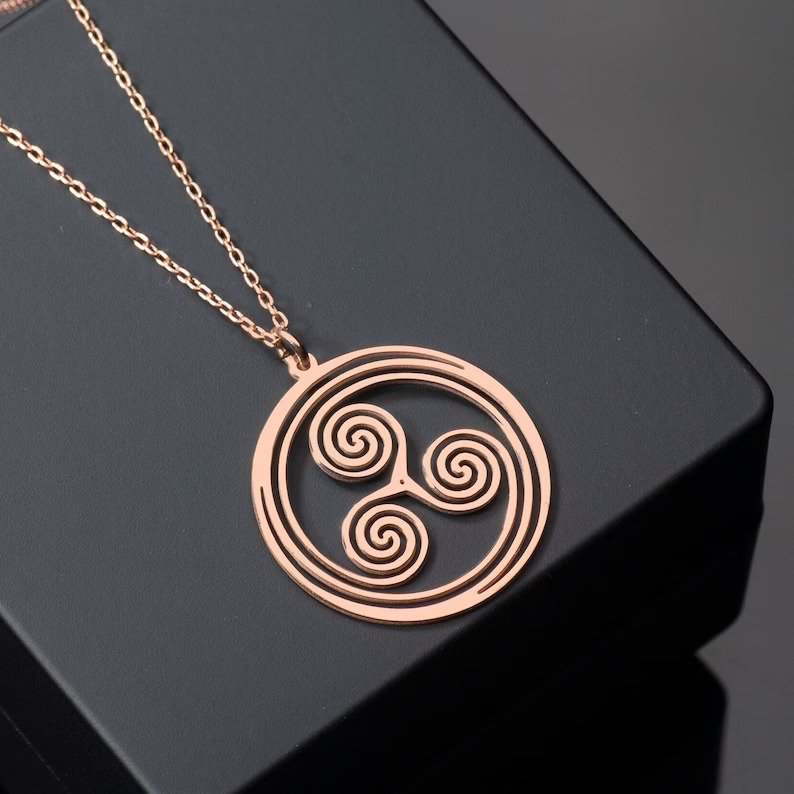
Also known as the Triple Spiral, the Triskele traces its roots in Celtic and Irish traditions. Its name is derived from the Greek words “Tri” and “Skelos,” meaning “three legs,” and is made up of three spirals that are interlocked, with each spiral turning in the same direction. The Celts believed that everything happens in batches of three, and this belief is reflected in the emblem’s three spirals.
The Triskele is said to represent the three worlds, including the present or physical world, the spiritual realm, and the celestial realm of the sun, moon, and stars. It is also seen as a metaphor for the three domains of time, including the past, present, and future, as well as the elements of earth, sea, and sky.
Symbolically, it illustrates the trilogy of personal growth, spiritual progress, and human development; the cycle of life, including birth, death, and rebirth; and the concepts of creation, protection, and creation.
18. The Eyes of Buddha
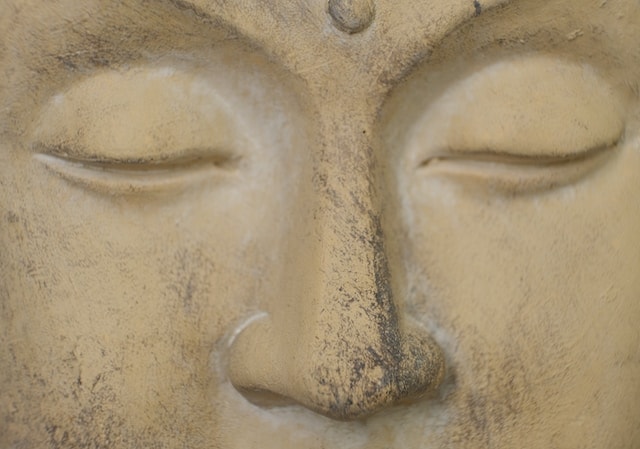
Buddha’s Eyes, also known as Wisdom Eyes, are powerful symbols used in Buddhist art, particularly in the context of stupas and other sacred monuments. The symbol is characterized by two half-closed eyes, with a circle or spiral between and slightly above the eyes known as the urna – one of the thirty-two characteristics of a great man in Buddhism, representing the third eye or spiritual eye.
The Buddha’s eyes signify his wisdom, compassion, and omniscience as he watches over all sentient beings. The eyes are a reminder of the Buddha’s all-encompassing awareness and the importance of developing mindfulness and wisdom in your own spiritual journey.
19. Mala Beads

Traditionally made from seeds, wood, or gemstones, Mala Beads are used as tools for meditation and mindfulness, helping practitioners maintain focus and concentration during their practice and bringing them closer to enlightenment. The strand typically has 108 beads, a number considered sacred in Hinduism and Buddhism, which embodies the interconnectedness of all things and the universe.
At the center of a mala strand, you’ll find a bed that is larger than the others, called the guru bead. This bead is a reminder of the energy and wisdom generated during meditation and represents the spiritual teacher or guide. When using mala beads, you should start at the guru bead and move through each bead with each recitation of a mantra or affirmation, eventually returning to the guru bead as a sign of completion and reverence for the spiritual guide.
20. Bell

A ringing bell is a powerful tool for healing and promoting a sense of divinity. In Hinduism, the ringing of a bell is believed to create an aura that calms the mind and promotes tranquility, with its sound able to cleanse the sins of the past hundred lives in order to help you move towards a state of enlightenment.
For Buddhists, the vibrations of a bell can help awaken the sleeping soul and bring you into a state of deep meditation. Meanwhile, the sound of the bell is said to clear the mind of distractions and negative thoughts, allowing you to focus on your spiritual practice and connect with the divine.
Tibetan Buddhists often use it with the vajra, a ritual object that symbolizes the power of compassion and enlightenment. Together, these two embody the union of wisdom and compassion, as well as the attainment of enlightenment through the expansion of consciousness.
21. Ensō
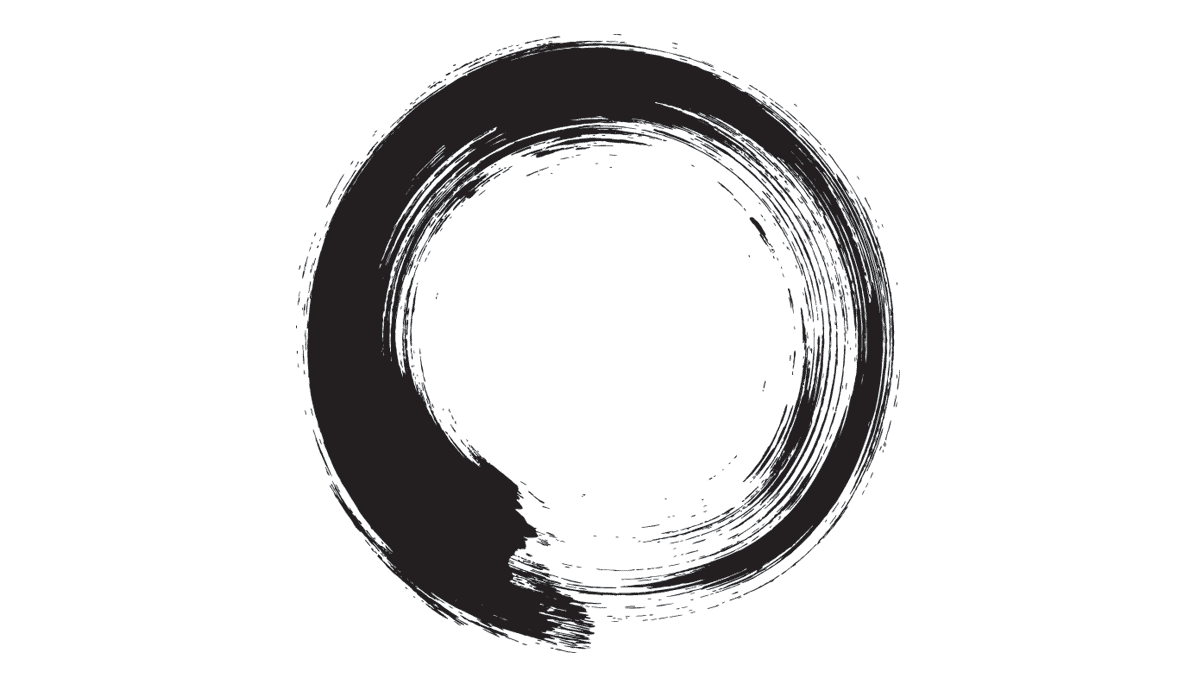
A sacred symbol in the Zen school of Buddhism, the ensō is widely recognized as a metaphor for enlightenment and the interconnectedness of all things. While it is not a character in the traditional sense, it is a powerful emblem that is often used in Japanese calligraphy and other forms of art, often referred to by various names such as the Circle of Enlightenment, the Enso Circle, the Infinity Circle, and the Lost Symbol of Reiki.
The ensō holds great significance in the journey toward self-discovery and personal growth. It is created through a single brushstroke, which can serve as a reminder to let go of expectations and embrace the beauty of imperfection, as well as the importance of self-acceptance, connection, and the fluidity of life’s journey.
Wrapping Up
Spiritual awakening or enlightenment refers to a profound shift in consciousness, often marked by a newfound awareness of spiritual reality. This shift can be gradual or rapid and can mean different things to different people.
Some signs of spiritual awakening include questioning previously held beliefs, clearing certain things out of your life, developing a deeper sense of purpose, and experiencing heightened empathy and compassion. It may also involve a sense of oneness with the universe or a higher power.
Symbols of spiritual awakening are important themes in both the religions of the old times and the spiritual practices of the modern age. They can help you focus your mind, evoke particular states of consciousness, connect with the divine, and deepen your spiritual practice and understanding of enlightenment.
Further reading about other symbols
15 Powerful Symbols of Balance and Harmony
20 Powerful Symbols of Inner Peace and Their Meanings
20 Powerful Symbols of Positive Energy
20 Powerful Symbols of Fidelity and What They Mean
12 Powerful Symbols of Truth & Lies – A List
25 Powerful Eternity & Immortality Symbols (With Meanings)
22 Powerful Symbols of Kindness and What They Mean
21 Remarkable Symbols of Energy and Their Meanings






